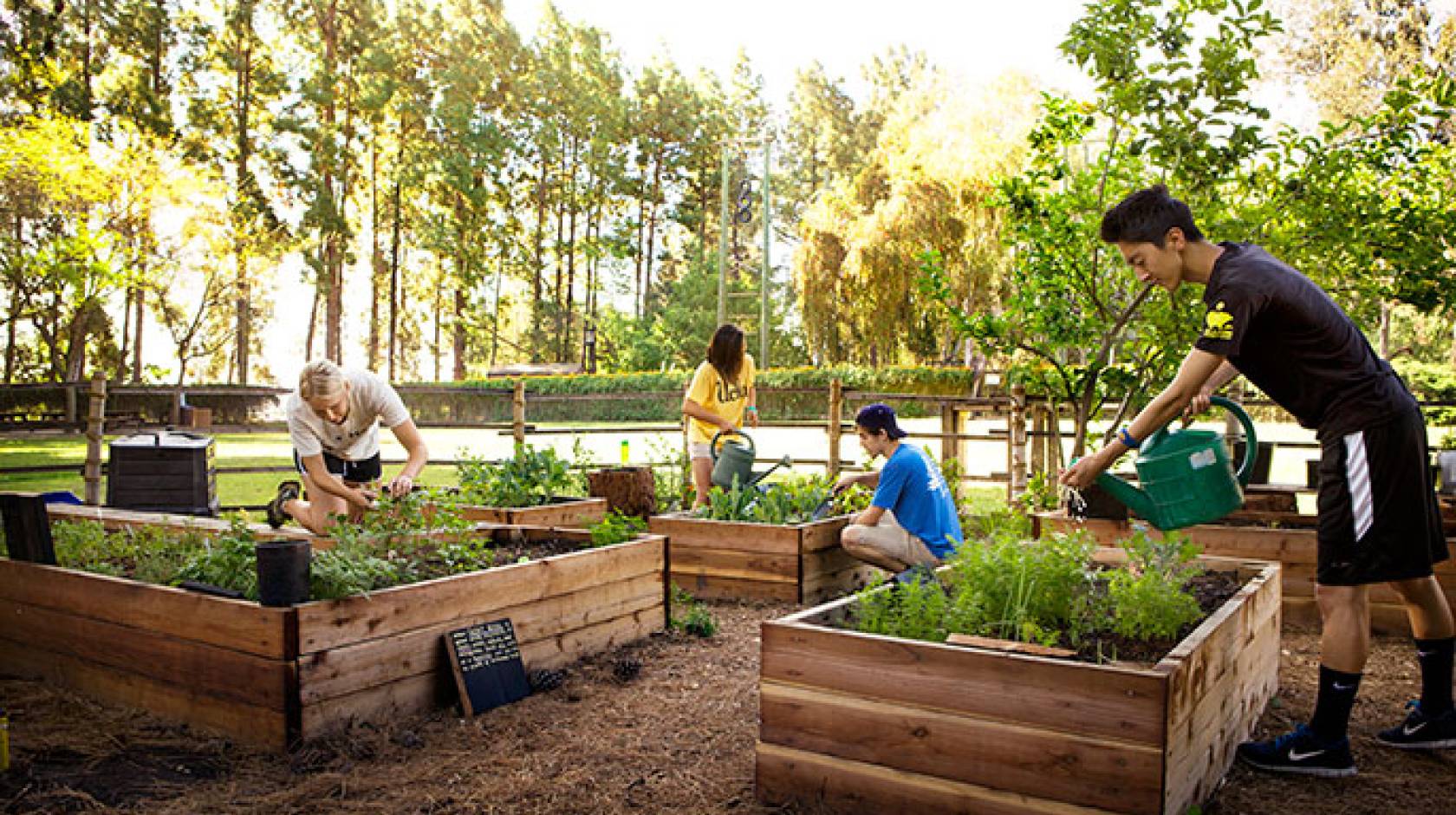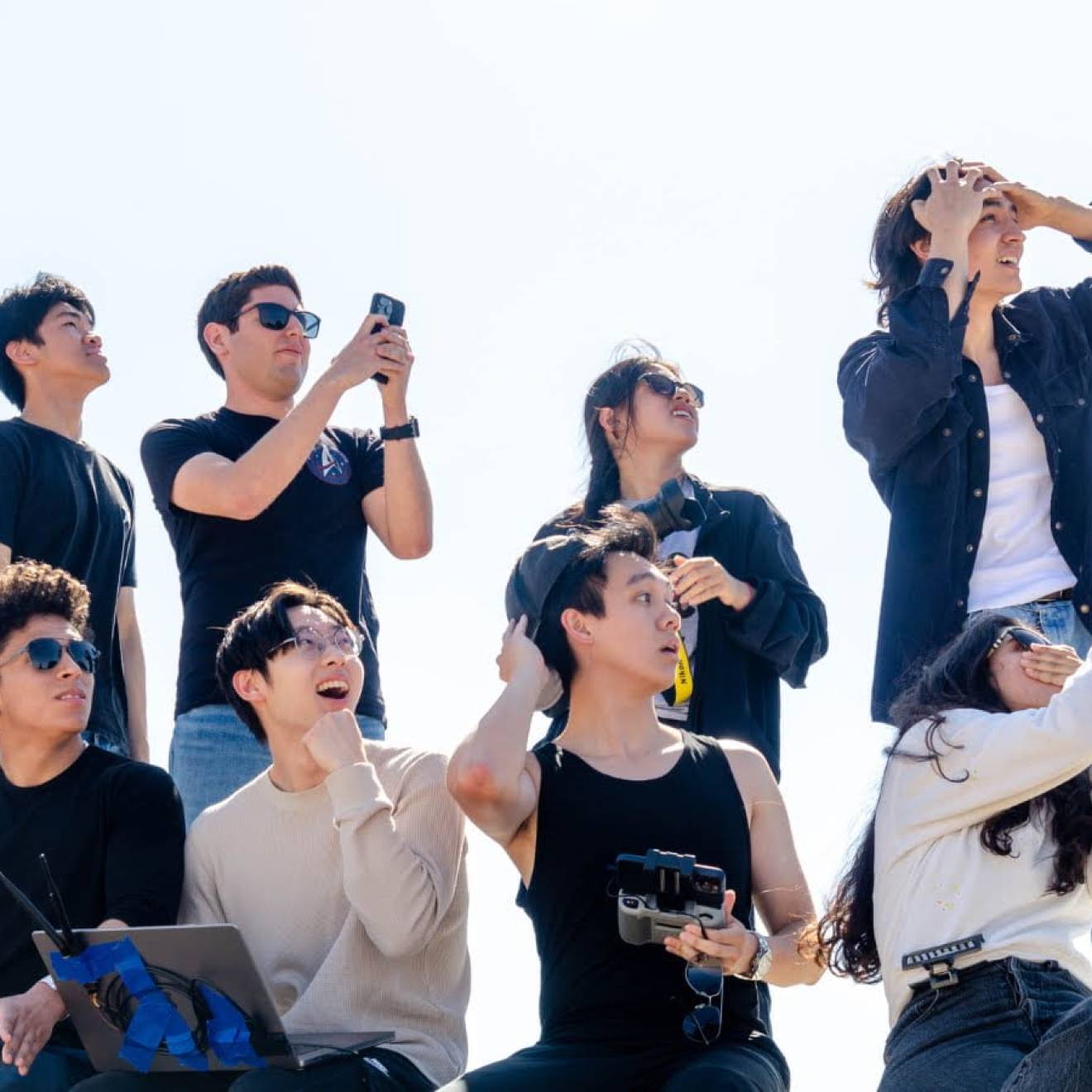Harry Mok, UC Newsroom

A visitor to the third floor of UCLA’s Reiber Hall might wonder why half the light bulbs are out. They’ve been turned off. On purpose.
Windows at the end of the hallway add enough sunlight to see during the day, and even with half of the 10 lights out at night, it’s still bright enough. Welcome to UCLA Residential Life’s Sustainable Living Community, where reduced artificial lighting — and the energy savings that come with it — are part of the experience.
Up to 85 students a year choose to live here, drawn by the chance to learn about energy conservation and green living. Residents participate in education programs and outreach activities designed to encourage the wider campus community to think about how individual actions impact the environment.
The themed community at UCLA is one of 13 UC winners of 2015 California Higher Education Sustainability Conference Best Practice Awards. They will be honored at a conference ceremony July 21 at San Francisco State University, where this year’s UC Sustainability Champion also will be announced.
The awards recognize innovations at UC and the California State University that further campus energy efficiency and sustainable operations.
“The residents we had this year were outstanding and made everything possible,” said Sarah Dahnke, a UCLA Sustainable Living Community resident adviser for the 2014-15 year. “They make it fun for each other, and there’s really a culture of sustainability on our floor.”
The Sustainable Living Community was recognized for a host of activities, including:
- Piloting the use of low-flow showerheads, which are now being installed in all of UCLA’s residence halls.
- Joining forces with the student environmental group E3: Ecology, Economy, Equity to work together on projects such as the DigUCLA community garden.
- Holding panel discussions about topics like the Green Mondays sustainable food initiative at UCLA dining halls.
- Helping to create a reusable dishware program that eliminated the use of disposable utensils at events involving food at residence halls.
Residents work with other student groups and the larger campus community to expand awareness on how to live more sustainably, Dahnke said. “We try to give our residents a holistic perspective on what our campus offers and how they can get involved.”
The UCLA Sustainable Living Community won its award in the Student Sustainability category. Other UC winners and their categories were:
Overall Sustainable Design: UC Berkeley
UC Berkeley’s new Campbell Hall was lauded for a design that respected its location in a historic plaza while being a modern, LEED-Silver rated building that is one of the most sustainable on campus. Judges also praised how building managers worked with the Department of Astronomy during the design process and move-in phase, and their commitment to survey occupants regularly to seek feedback.
Overall Sustainable Design Honorable Mention: UC San Diego
The Marine Ecosystem Sensing, Observation and Modeling building at the Scripps Institution of Oceanography is the first LEED Platinum rated laboratory on campus. The design takes advantage of San Diego’s mild climate by utilizing natural ventilation, sun-powered daylighting and a rooftop solar power system to reduce energy use.
Lighting Design/Retrofit: UC Irvine
The UC Irvine Student Center replaced 3,200 fluorescent fixtures with LEDs and dimming controls. The change resulted in $125,000 in annual savings while improving the quality of lighting.
Waste Reduction: UC Santa Barbara
UC Santa Barbara decreased its custodial staff workload while improving its waste collection practices in a collaborative effort with facilities managers and staff members. A survey of 10 buildings on campus identified optimal locations for receptacles, ways to reduce contamination of recyclables and more efficient procedures for servicing containers.
Waste Reduction Honorable Mention: UC Davis
Disposing of soiled gravel at the California National Primate Research Center at UC Davis used to account for about 25 percent of the campus’s solid waste. A new employee’s idea to use reclaimed wastewater, a cement mixer and gold mining equipment to clean the gravel has enabled it to be reused. The change has reduced waste and will save money in the long run.
Sustainable Food Service: UC Davis
UC Davis students initiated a program to develop a food supply chain between the Russell Ranch Sustainable Agriculture Research Facility and campus dining services. Students and staff members collaborated to create Aggie Grown, which supplies campus food services with thousands of pounds of sustainably grown tomatoes and wheat produced by Russell Ranch.
Water Efficiency/Site Water Quality: UC Santa Cruz
UC Santa Cruz’s implementation of a 10-year drought plan enabled the campus to meet the city of Santa Cruz’s mandate to cut water use by 25 percent. A Web-based water management system, extensive campus engagement and other measures resulted in 27.8 million gallons of water saved in eight months.
Water Efficiency/Site Water Quality Honorable Mention: UCLA
UCLA took over the management of producing high-purity water used in research laboratories and improved the water softening process, which cut water use by 40 percent and decreased costs by $168,000 per year.
Student Energy Efficiency: UC Berkeley
The LED Microscope Lighting Retrofit Project replaced inefficient metal halide bulbs with energy-saving LEDs in devices at laboratories across UC Berkeley. The student-led project gave team members an opportunity to meet and talk with UC researchers about sustainability in lab settings.
Sustainability in Academics: UCLA
Each year, more than 100 students from 30 different majors enroll in the Education for Sustainable Living Program at UCLA to conduct campus-based research on recycling, energy efficiency, water conservation, purchasing, food systems and facilities management.
Monitoring-based Commissioning: UC Santa Barbara
UC Santa Barbara connected the water chilling facilities in eight buildings to improve measurements and system analysis, resulting in a 31 percent decrease in energy use.
Sustainability Innovations: UC Santa Barbara
A public relations campaign at UC Santa Barbara created a multimedia effort focused on drought and water issues included posters, bus ads, social media, videos and public lectures.

